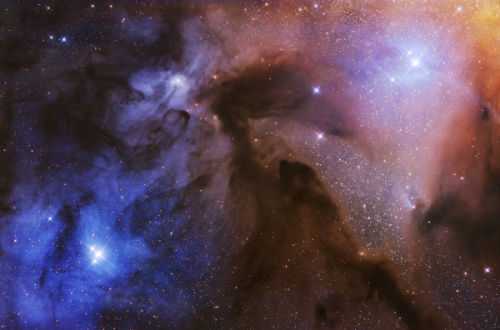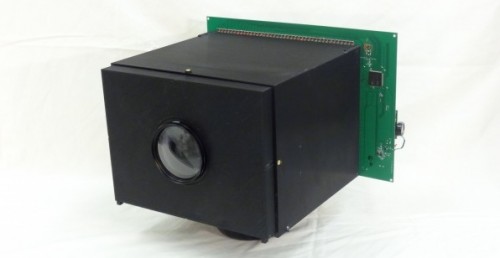Tag archives: photography
Prize-winning astronomy image, the ultimate cost of Cassini, amazing facts about lasers

Prize winning: the Rho Ophiuchi Cloud Complex captured by Artem Mironov (Courtesy: Artem Mironov)
By Hamish Johnston and Michael Banks
Hats off to the Russian photographer Artem Mironov, who has beaten thousands of amateur and professional photographers from around the world to win the 2017 Insight Astronomy Photographer of the Year. The award is in its ninth year and is run by the Royal Observatory Greenwich together with Insight Investment and BBC Sky at Night magazine. Mironox’s image, which was taken over three nights from a farm in Namibia, is of the swirling dust and gas clouds in the Rho Ophiuchi Cloud Complex. The object is situated approximately 400 light years away from Earth and is home to a cluster of more than 300 protostars. As well as winning the £10,000 top prize, Mironov’s image will be on display along with other selected pictures at an exhibition at the Royal Observatory that will run until 28 June 2018. The competition received over 3800 entries from over 90 countries. (more…)
View all posts by this author | View this author's profile
The July 2015 issue of Physics World is now out
By Matin Durrani
Sometimes, nature does something unexpected – something so rare, transient or remote that only a lucky few of us get to see it in our lifetimes. In the July issue of Physics World, we reveal the physics behind our pick of the weirdest natural phenomena on our planet, from dramatic rogue waves up to 30 m tall, to volcanic lightning that can be heard “whistling” from the other side of the world, and even giant stones that move while no-one is watching. We also tackle tidal bores on rivers and the odd “green flash” that is sometimes seen at sunset.
Plus, we’ve got six fabulous full-page images of a range of weird phenomena, including salt-flat mirrors, firenadoes, “ice towers”, beautifully coloured nacreous clouds, mysterious ice bubbles of gas trapped in columns, as well as my favourite – the delicately wonderful “frost flowers” seen very occasionally on plants.
Self-powered camera can take selfies forever

Say cheese: is this self-powered camera the future of photography? (Courtesy: Computer Vision Laboratory, Columbia Engineering)
By Ian Randall
With a smartphone in every pocket and remotely operated cameras on every street corner, digital cameras are a ubiquitous part of life. Last year alone an estimated two billion cameras of various sorts were sold worldwide – with such sales likely to increase. While personal cameras are easily recharged, many new remote applications require smaller and longer-lasting power supplies.
But what if your camera could self-power while you take selfies? This is the idea put forward by Shree Nayar and his colleagues at Columbia University in New York City, who have created the first ever completely self-powered video camera.
View all posts by this author | View this author's profile
Starry Starry Night
By Tushna Commissariat
It is commonly thought that astronomy and astrophotography are rather exclusive hobbies and that you require a lot of specialist equipment and training to pursue them. But an amateur astrophotographer, using only his ordinary digital SLR camera, a tripod and his love for the skies, has won the major astrophotography prize at the inaugural STARMUS festival.
Not only did Alex Cherney win the opportunity to attend and mingle with the who’s who of astronomy at the STARMUS festival – an astronomy and space-science festival held in the Canary Islands this June – but the Australian amateur astronomer also won an hour using one of the largest optical telescope on the planet – the 10.4 m Gran Telescopio Canarias (GranTeCan), in the Canary Islands in Spain.
Cherney’s prize-winning collection of time-lapse sequences of the Milky Way, seen over the Southern Ocean, beat a bevy of global participants for the best entry as judges felt his scenes were “chosen with the eye of an artist” and that his “subtle panning and excellent control of colour and contrast revealed technical skills of the highest order”. Cherney uses only his Nikon D700 DSLR camera and produced a compilation of images taken over 31 hours of exposure time.
This is notably the first time an amateur astronomer has been allowed access to the GranTeCan and Cherney was keen to make the most of the opportunity. After much deliberation, he decided to use his hour to observe and photograph Arp84, a pair of interacting galaxies – NGC5394 and NGC5395. (Image above courtesy: Alex Cherney)
“I wanted an object that would look nice given the parameters of the telescope and has not been photographed in colour and great detail by a professional telescope,” he said. Noel Carboni, an astro-image-processing expert, met Cherney at the festival and helped to produce a colour image. Carboni feels this is the clearest image of Arp84 ever made. Cherney felt the experience of using the telescope was “incredible”, akin to taking a space flight. “It is very hard to describe what it is like to observe space with an instrument that is helping scientists seek answers to the origin of the universe.”
Cherney put his opportunity of being at the La Palma observatory to good use, producing another time-lapse video featuring GranTeCan and MAGIC (Major Atmospheric Gamma-ray Imaging Cherenkov Telescopes) as the backdrop for the night skies. Take a look at the stunning video below.
Outer Space from Alex Cherney on Vimeo.
View all posts by this author | View this author's profile
